Baklava remains as one of the most popular desserts for most of us and we were delighted to have a chance to observe how the real thing is made during our culinary tour in Istanbul, back in April. Our destination was Gulluoglu Baklava in Karakoy, the master of baklava makers since 1800’s.
What impresses me is the love and passion the Gulluoglu family have for their product and thrive to make each and every baklava an unforgettable experience. “Hear the crack”, says the 6th generation baklava maker Murat, from the Gulluoglu family, as he divides the piece of baklava with his fork while we tour around the production line; “that cracking sound is the sign of freshness, a sign of the finest baklava; a must for us. Good baklava leaves a heavenly taste in your mouth; it shouldn’t be very sweet and heavy; on the contrary it should be light enough to tempt you to eat a small plateful.”
Karakoy Gulluoglu runs baklava demonstration sessions at their factory in Karakoy and watching the ustas, masters of baklava in action, is an unforgettable experience. When I say Masters, I mean it; each of the Ustas, Masters, spend 8-10 years at each phase of baklava making to perfect it; rolling the dough; turning the dough into the paper thin sheets of pastry, making the syrup, baking at the right heat..
The very first thing that greets you here is the clouds of flour in the air to make that paper thin sheets of pastry for baklava, all “opened”, stretched by hand with an oklava, rolling pin.
Once the pastry is paper thin (2mm width), the Ustas, masters, start layering them on a buttered tray. The hand rolled pastry is so thin that you can read the newspaper article behind the pastry sheet.
The baklava master layers 20 sheets of pastry ( and sprinkles melted butter on every 4 sheets) then generously spreads finely crushed Gaziantep pistachios – finest and only type used at baklava here- (or at some cases walnuts) on the 20th layer.
Once the next 20 layers of sheets added on top, the master, usta cuts the sheets first horizontally and pours melted butter over them – cutting helps the butter to penetrate every level. He then cuts vertically and splashes another dose of melted butter all around. The baklava is now ready to be baked in the oven at 165 C – 330 F.
We also had a go at baklava pockets with clotted cream and pistachios; kaymakli, fistikli gelin bohcasi, another amazing treat.
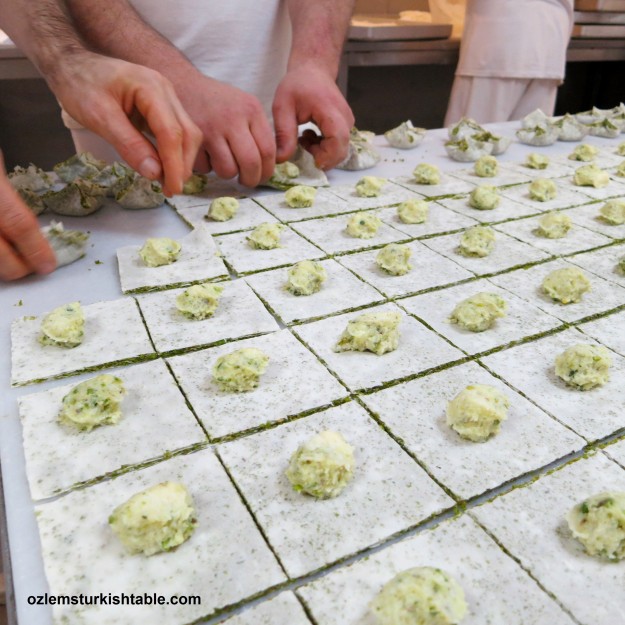
Having a go at fistikli gelin bohcasi; baklava pockets with thick clotted cream, kaymak, and pistachios
While baklava was baked in the oven, the syrup is prepared, consisting of pure cane sugar, lemon juice and water. In Turkey, there is no honey added in to the baklava syrup.
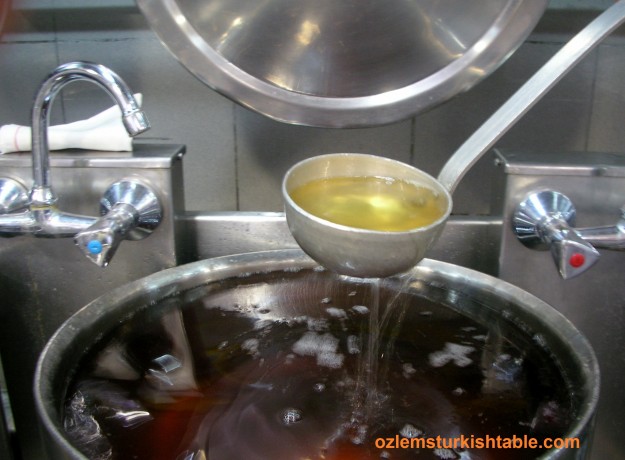
In the traditional baklava syrup in Turkey, there are pure cane sugar, lemon juice and water – no honey in it-
Once cooked, the hot syrup is poured over the relatively cooler baklava, and then baklava tray goes back to the oven for another 5 minutes or so to soak up the syrup. After this, the baklava is rested at a cool area.
- Syrup poured on baklava; now ready to go back to the oven again
And here is the real thing; wonderful, melt in the mouth delicious baklava. It is so light that you feel like eating ta plateful! I hope you get a chance to try the baklava in Turkey.
History of Baklava – Baklava Parade during the Ottomans
There are many theories as to the origin of baklava; but there is one thing for sure, that baklava was perfected at the Topkapi Palace Kitchens during the Ottoman Period and it was the Sultans’ favorite dessert. The importance of baklava at the Palace was not only because it was accepted as the token of wealth and sophistication ( as in the mansion houses) but also because it was a State tradition. The baklava parade that started at the end of the 17th century or at the beginning of the 18th century is example of this tradition.
When soldiers were getting their trimonthly pay from the Sultan, they were offered a big feast and on the 15th day of Ramadan they were treated to baklava. On the 15th day of Ramadan when the Sultan visited Hırka-i Serif (the cloak of Prophet Mohammed kept in Topkapı Palace) as a Caliph , baklava from the palace was sent to the Sultan’s Janissary soldiers. It was one tray of baklava for ten soldiers. The delivery of baklava to the soldiers and carrying the baklava to the barracks had then became an imposing parade.
Testing the Baklava
Here are some of the tests the masters, ustas at Gulluoglu carries out for a perfect baklava:
Hearing Test
When you place a fork into a baklava you should hear a rustling sound. This means that the thin layers of dough are really thin and baklava is well cooked. The thinner the layers of dough the better the baklava.
Smelling test
When you lift to your mouth, you must smell the butter and the nut or peanut used as a filling. A good baklava should have fine ingredients.
Tasting test
You can feel the good baklava in your mouth. Good baklava leaves a heavenly taste in your mouth and does not hurt the stomach.
I hope all these inspire you; would you like to have a go at making baklava at home? I make it with filo pastry sheets; it is easier than you think and very satisfying. My version is a little less sweeter and fragrant with a touch of lemon taste, here is the recipe if you would like to have a go. The real thing shouldn’t be very sweet and heavy; on the contrary it should be light enough to tempt you to eat a small plateful. I think this version achieves that.
I will be demonstrating how to make baklava at my next Turkish Cookery class, at Central Market Cooking School, Austin – Texas on 2nd August.
- The Blue Mosque, Sultanahmet Camii, Istanbul
9th July marks the start of the holy month of Ramadan this year; best wishes to all observing Ramadan; Ramazaniniz Mubarek Olsun. Baklava is one of the traditional desserts enjoyed during Ramadan, I hope you enjoy this special treat and have a chance to make it at home.
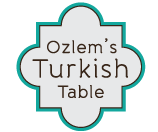
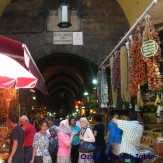
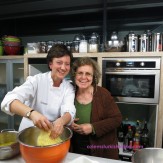
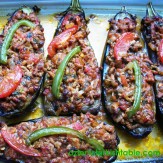

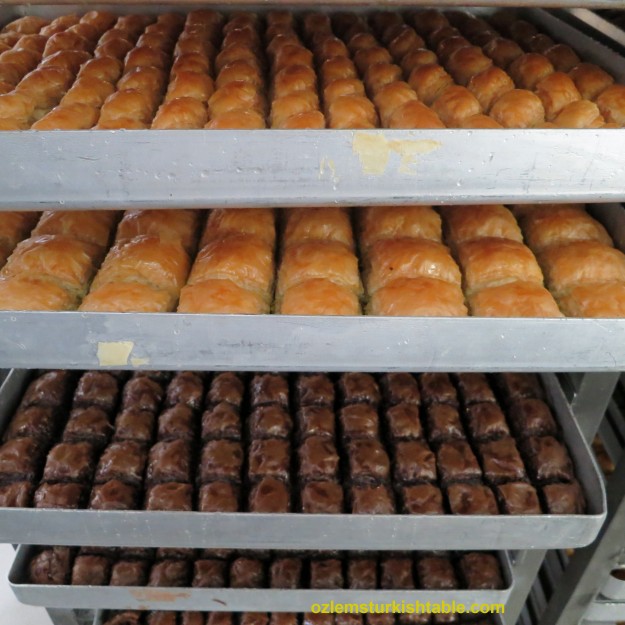
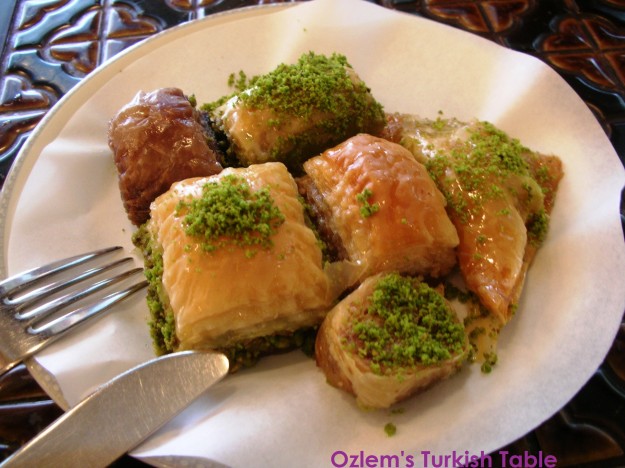
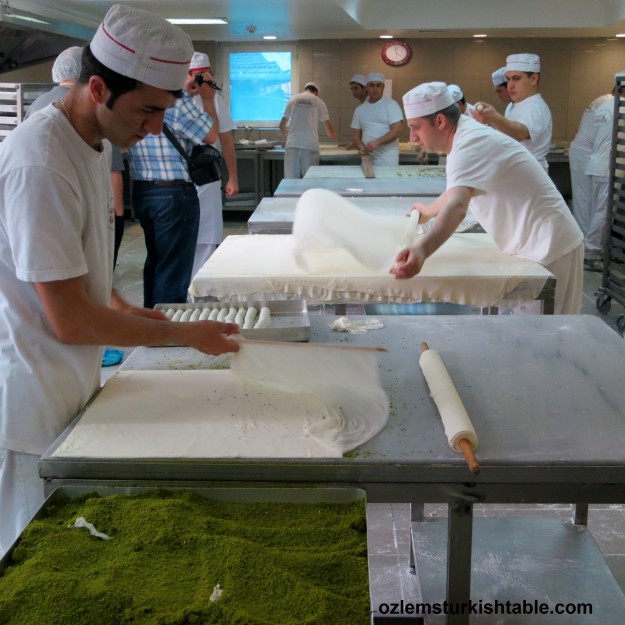
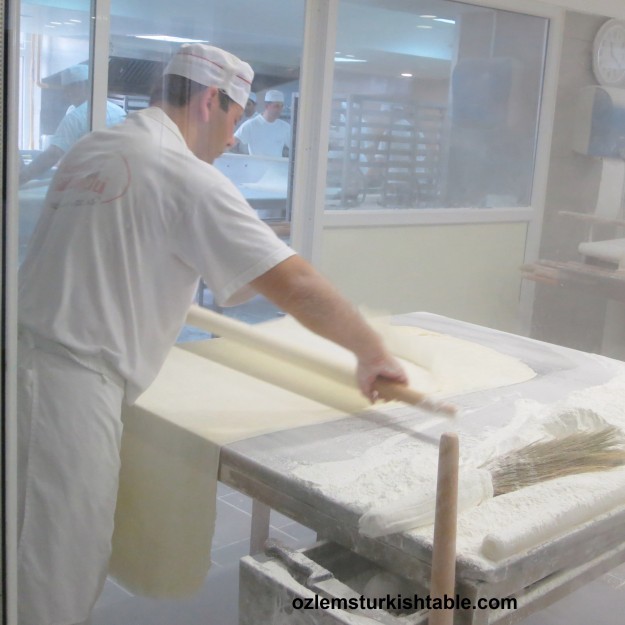
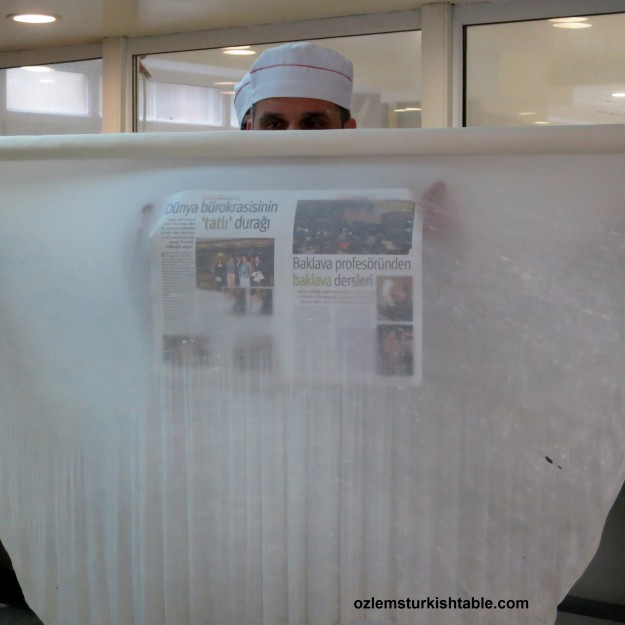
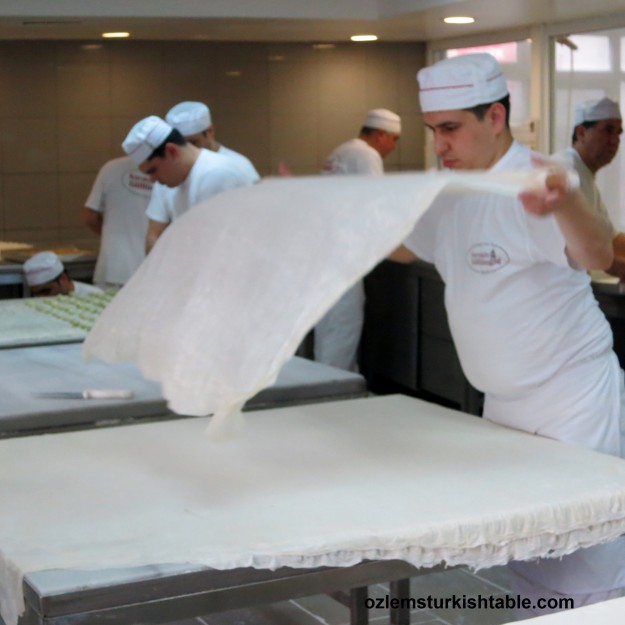
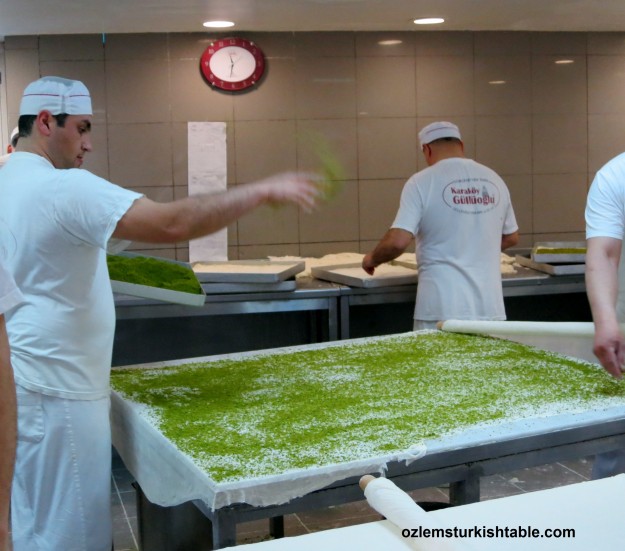
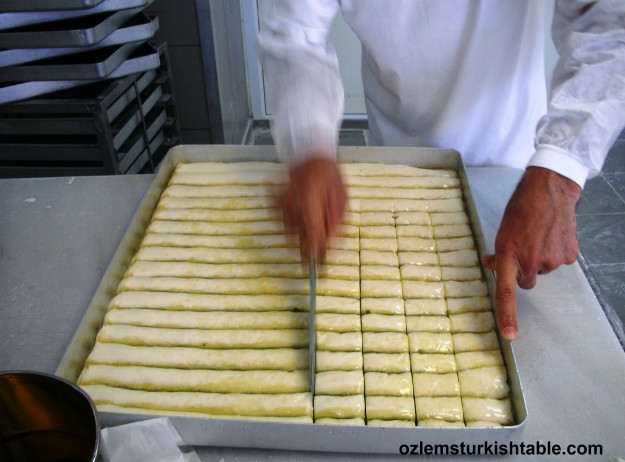
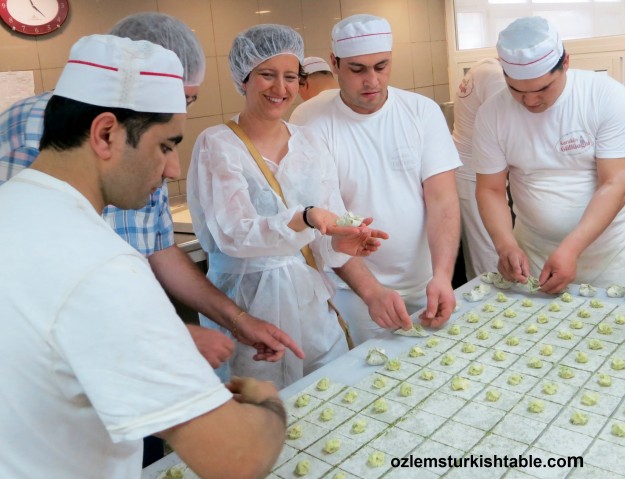
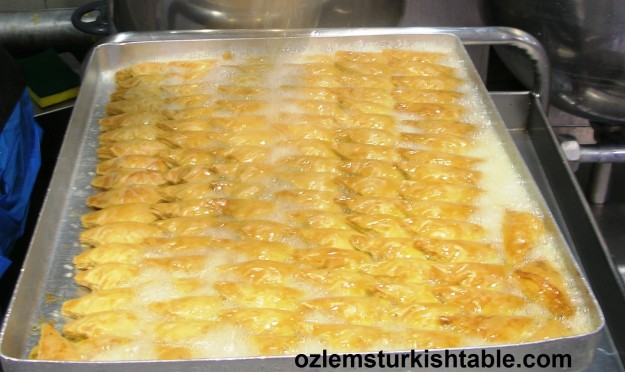
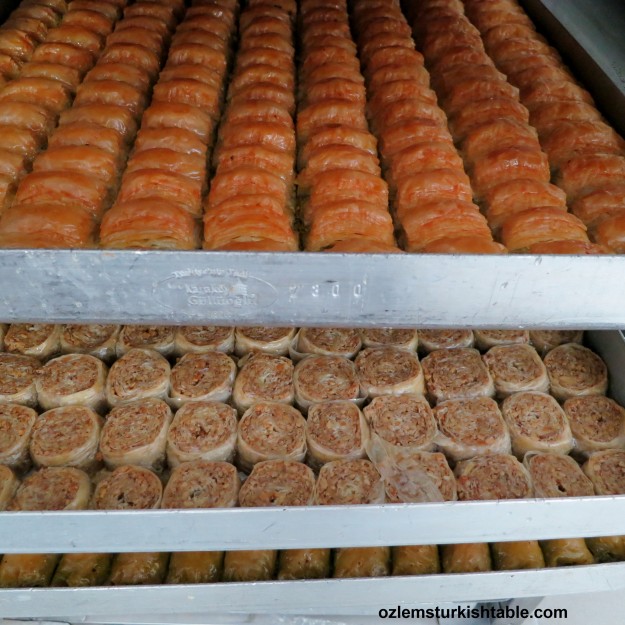
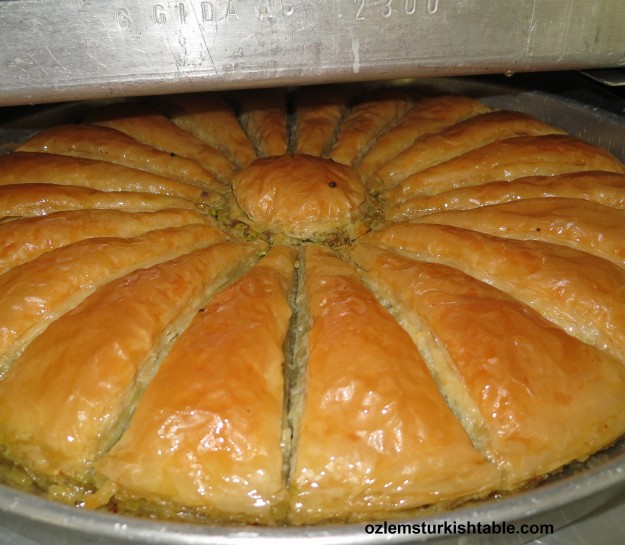
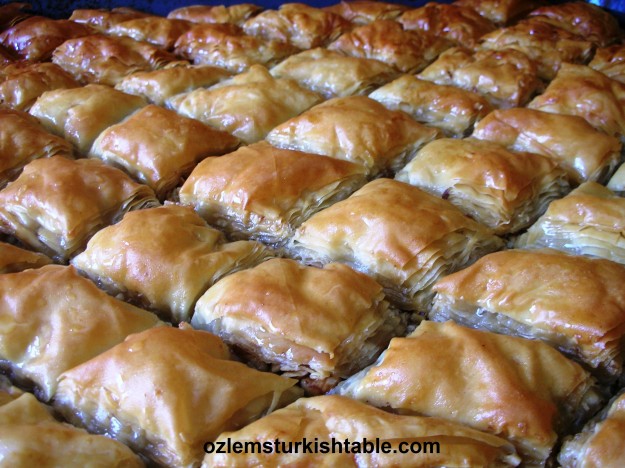
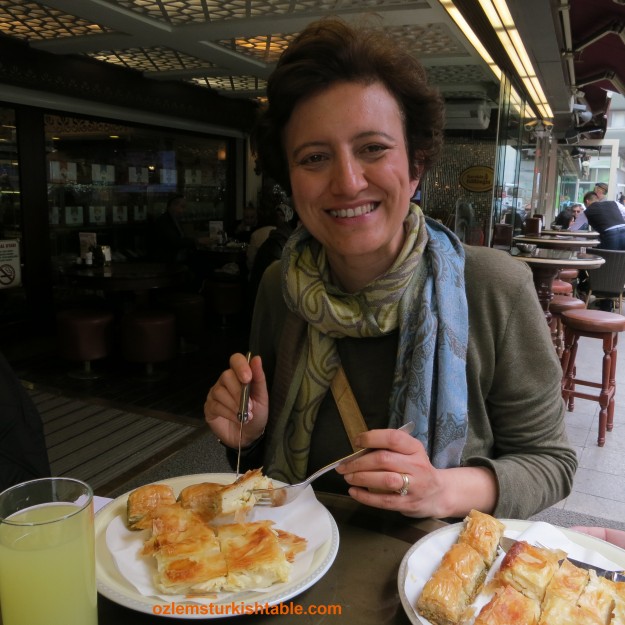

How I wish I could have been there with you!
How greatly I wished too Barbara:) Gulluoglu staff is very friendly, you may enjoy this demonstration tour, fascinating to watch!
i love baklava! and i don’t like many desserts. i made my own baklava and my own phyllo for the first time when i was 14 years old.
Very impressive that you made your own filo (phyllo) pastry Jaz, at the age of 14!! that’s a mastery – must say I have a soft spot for a well made baklava too.
I’m speechless
This is an AMAZING baklava, and I wish I could grab a piece and eat it 🙂
Baklava is very popular in my country
Thank you for stopping by Winnie, it was an amazing piece of baklava : ) our home made version turned up really well too, if you’d like to have a go 🙂
[Marked as spam by Antispam Bee | Spam reason: Server IP]
Özlem, I absolutely loved the photos from Güllüoğlu. We pass by that place every morning on our early morning walk – about 5:30 am – and many times, the guys are hanging out the window and they wave to us with a big ‘Günaydın!’ Thanks for taking us back there. BTW, although we won’t be there, we’re quite excited about your cooking demonstration as well.
Merhaba Jolee, thank you so much for your kind note – you capture the best of Istanbul with your 5.30am walk around Karakoy – enjoy those for us: ) Indeed they Gulluoglu staff have been so friendly and so kind to let us into their workplace, and very generous. I am greatly excited about going back to Texas and teach there; it really is the people that make a difference wherever you go, we look forward to seeing old friends and enjoying a delicious bite of Turkish food with food lovers. Cok selamlar, Sevgiler, Ozlem
[Marked as spam by Antispam Bee | Spam reason: Server IP]
Oh dear Ozlem, this looks so beautifully flaky and delicious, I can just imagine the magic of 20 sheets of beautiful crisp pastry and pistachio, with butter:) xx Peri.
Cheers Peri; that is some divine combination, and it does its magic everytime : ) Enjoy India!!:) xx Ozlem
Wow, what an amazing post! (Especially the photo of the newspaper through the super-thin dough! So remarkable that dough that thin, uniform, and perfect is rolled by hand.) Baklava is one of my favorite treats, and I loved learning more about the tests for excellent baklava from the masters. : ) Thank you for sharing this post!
It is a pleasure to share Allison, glad you enjoyed it : )
How I love Bakalava! Thanks for this drool-worthy post! I will have to try your recipe soon!
I hope all is well in Istanbul.
thanks Susan!
I am drooling! Looks so delicious!!!
Merhaba April, thank you, it was quite a special experience 🙂
That is so impressive. I’ve had some very fine baklava and some which was not so fine. I’ve always thought that it should feel light rather than dense and heavy and I’m very pleased that the people who really understand it feel the same way. I’ve never tried making it myself, though.
I wish you could try the real thing Phil, perhaps next time when I am Istanbul, I can get you some – you are afterall, literally at my next door town : ) It really is much lighter and over all, enjoyable. Glad you enjoyed the post.
[Marked as spam by Antispam Bee | Spam reason: Server IP]
you are really tempting me with the one with cream and pistachios! next time I get lucky enough to be in Istanbul I am going to check this place out. looks amazing!
Thanks Joumana, that really is a worth while experience, watching the masters making the baklava; the one with kaymak and pistachios is a real treat; do hope you get to do this. Glad you enjoyed the post!
Nice!
I just started a new series on Twitter * Do Try This at Home, and your page is first 😉
https://twitter.com/Special_Turkey/status/431004022431305728
Many thanks, look forward to checking out and following you!
I have been here all the time I visit Istanbul , the service is great, the price il a little ig higher but it worths , you cannot come to Istanbul wwithout buy some Baklava here .
Thanks for stopping by, I so agree, baklava is really special there. My best wishes, Ozlem
Hi OZLEM!
Wonderful post and love the way you made turkish baklava. Just a question if that’s healthy for people with sugar? Wish to meet you if come detroit one day.. 🙂
Cheers.
Ali
Merhaba Ali, many thanks for your kind words for my baklava recipe; it does have sugar, but one can adjust the sweetness with less sugar if preferred. As it is a treat; small portions are best but if one has sugar intolerance, they need to check whether it is right for them – hope to make it Detroit one day too! : )
Afiyet Olsun,
Ozlem
thanks for the link 🙂